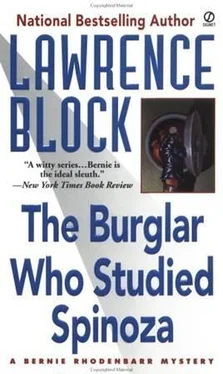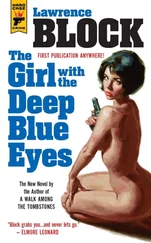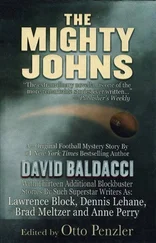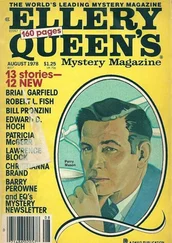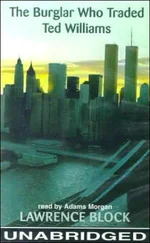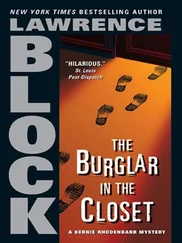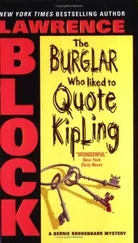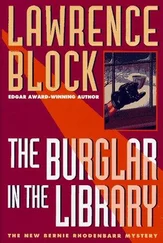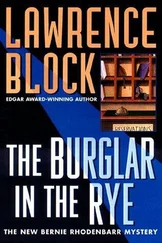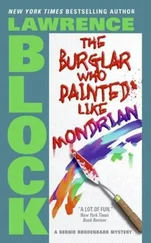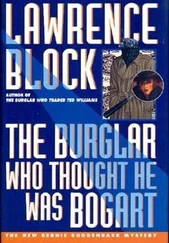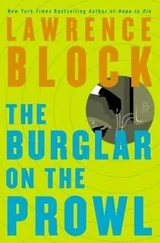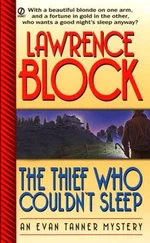"It's possible."
"Would you just go ahead and invite anyone you think ought to be invited? May I just leave that up to you?"
"All right."
"I've already spoken to several of the people in his building, and one woman's going to post a notice in the lobby. I suppose I should have made arrangements with a church in that neighborhood. Some of those people find it difficult to get around easily. But I'd already made plans with the Church of the Redeemer before I thought of it. I hope they won't mind coming all the way out to Brooklyn."
"Perhaps it'll be an adventure for them."
"I just hope the weather's decent. The rain's expected to have left off by then, but the weatherman doesn't give guarantees, does he?"
"Not as a general rule."
"No, more's the pity. I'm sorry to have gone on so, Mr. Rhodenbarr, but-"
"Bernie."
"Bernie. It's late and I'm tired, perhaps more so than I'd realized. You will try to come? Sunday at two-thirty? And you'll invite anyone you think of?"
"Definitely," I said. "And I'll bring along something to read."
I wrote down the time and the address and the name of the church. Carolyn would want to come, of course. Anybody else?
I got in bed and tried to think if I knew anyone who'd want to attend a memorial service for Abel. I wasn't acquainted with many other burglars, having a longstanding preference for the company of law-abiding citizens, and I didn't know who Abel's friends were. Would Ray Kirschmann want to make the trip? I thought about it and decided that he might.
My mind drifted around. So Abel had a granddaughter. How old was Jessica Garland likely to be? Her mum must have been born in 1936 or thereabouts, and if she had indeed married young and had Jessica early on, then twenty-four or twenty-five sounded like a reasonable ballpark figure. I didn't have any trouble picturing Abel playing host to a young woman about that age, telling her charming lies about the old days in the Viennese coffeehouses, plying her with strudel and eclairs.
And he'd never once mentioned her, the old fox.
I was almost asleep when a thought nudged me back awake again. I got out of bed, looked up a number, made a phone call. It rang four times before a man answered it.
I stayed as silent as if I'd called Dial-a-Prayer. I listened, and the man who'd answered said "Hello?" several times, querulously, while in the background music played and a dog interposed an occasional bark. Then he hung up-the man, I trust, rather than the dog-and I went back to bed.
One of the things I'd found time to do between late phone calls was set my alarm clock, and come morning it rang its fool head off. I got up and groped my way through a shower and a shave and the first cup of coffee, then turned on the radio and toasted a couple slices of whole-grain bread, buttered them, jammed them, ate them, drank some more coffee, drew the drapes and cocked an eye at the dawn.
It looked promising, even to a cocked eye. To the east, dark clouds still obscured the newly risen sun. But the sky was clear in the west, and the winds generally blow from that direction, sweeping yesterday's weather out over the Atlantic -which, in this case, was right where it belonged. The sky over the Hudson had a distinctly blue cast to it.
I poured myself one more cup of coffee, settled in my most nearly comfortable chair with the phone and the phone book, glanced ruefully at Morton's feet, and let my fingers do the walking.
My first call was to the American Numismatic Society, located some four miles north of me at Broadway and 156th Street. I introduced myself as James Klavin of the New York Times and explained I was doing a piece on the 1913 V-Nickel. Could he tell me a few things about the coin? Was it true, for example, that only five specimens were known to exist? And did he happen to know where those specimens were located at the present time? Could he say when a specimen had last changed hands? And for what price?
Almost everyone likes to cooperate with the press. Describe yourself as a reporter and you can ask no end of time-consuming and impertinent questions, and all people ask of you in return is that you spell their names right. The man I spoke with, a Mr. Skeffington, said he might be a moment and offered to ring me back. I said I'd hold, and I held for ten minutes, sipping coffee and wiggling my toes, while he scurried around doing my legwork for me.
He came back in due course and told me more than I really needed to know, repeating a lot of what Abel had told us Tuesday night. There were indeed five specimens, four of them in public collections, one in private hands, and he was able to furnish me with the names of the four institutions and the private collector.
He was less helpful on the subject of value. The A.N.S. is a high-minded outfit, more interested in scholarly matters like the varieties and the historical context of numismatics than such crass considerations as price. The most recent cash transaction of which Mr. Skeffington had a record was a sale Abel had mentioned-in 1976, for $130,000. According to Abel there'd been a sale since then for a substantially higher price.
I called the four museums in turn. At the Smithsonian in Washington, the curator of coins and medals was a gentleman with a dry voice and a hyphenated surname. He confirmed that a 1913 V-Nickel was a part of the Smithsonian's numismatic holdings, having been acquired as a gift of Mrs. R. Henry Norweb in 1978.
"It's on permanent display," he informed me, "and it's terribly popular. Tourists gawk at it and tell each other how beautiful it is. Now our coin is a frosty proof, but aside from that it looks like any Liberty Head Nickel, hardly an extraordinary item from the standpoint of numismatic design. You might care to argue that the Standing Liberty Quarter is beautiful, or the Saint-Gaudens high-relief twenty-dollar gold piece, but the Liberty Head Nickel? What makes this example beautiful? The date? Why, it's the value, of course. The rarity, the legends. People ooh and ahh at diamonds, too, and couldn't tell them from cut glass, not by looking at them. What exactly did you want to know about our coin?"
"I just wanted to make sure it was still there."
A dry chuckle. "Oh, it's still here. We haven't had to spend it yet. Not much you can buy with a nickel nowadays, anyway, so I guess we'll hang onto it for the present."
A woman at the Boston Museum of Fine Arts confirmed that a 1913 V-Nickel was one of the stars of the museum's coin display and had been since its acquisition by bequest shortly after the Second World War. "It's an extremely important numismatic item," she said, sounding like catalog copy, "and we're gratified to have it here in Boston."
An assistant curator at the Museum of Science and Industry was similarly gratified to have Nickel No. 3 in Cincinnati, where it had reposed since the mid-thirties: "We've deaccessioned a substantial portion of our coin holdings in the past few years," he told me. "We've had budget problems, and the coins have increased so dramatically in value that they seemed to represent a disproportionate amount of our capital in relation to their display value. There's been some pressure on us to eliminate coins altogether, as we did with our stamps, but then our philatelic collection was never more than third-rate. The 1913 Nickel's the star of our show. We've no plans to let it go, not that they've told me about. It's popular, you see, especially with the children. I wouldn't be surprised if someone's looking at it right now."
Nickel No. 4 had belonged to the Museum of the Baltimore Historical Society until a little over a year ago, I learned from a woman whose speech indicated an origin rather farther south than Baltimore. "It was our only important coin," she said. "We're really only interested in articles relating to the history of the city of Baltimore, but people tend to will their prize possessions to museums, and we in turn tend to accept what's left to us. We had the nickel for years and years, and of course its value increased, and from time to time there was talk of consigning it to an auction or selling it privately to a fellow institution. Then a foundation in Philadelphia devoted exclusively to numismatics came to us offering to exchange the Copley portrait of Charles Carroll of Carrollton." She went on to explain that Charles Carroll, born in Annapolis, had been a member of the Continental Congress, a signer of the Declaration of Independence, and a United States senator. I already knew who Copley was.
Читать дальше
